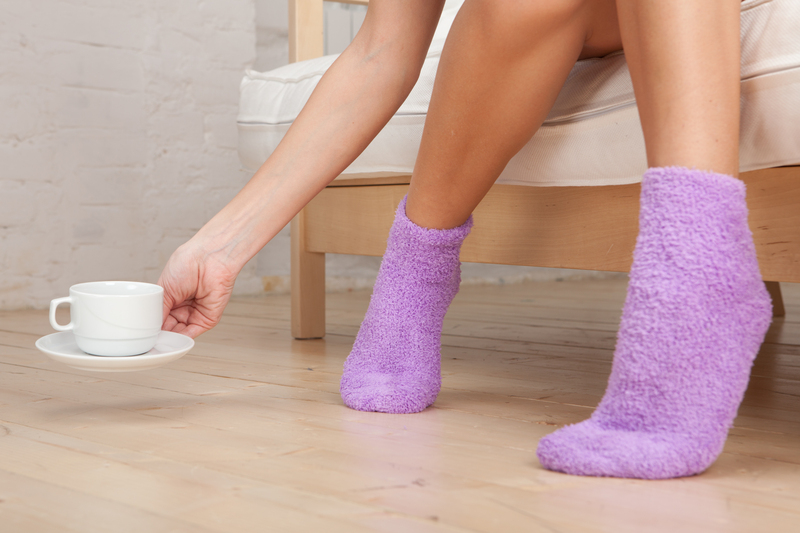Conquer Grease: The Simplest Techniques for Enamel Oven Tray Cleaning
Posted on 15/09/2025
Conquer Grease: The Simplest Techniques for Enamel Oven Tray Cleaning
Is your enamel oven tray a stubborn battlefield of baked-on grease and food residue? Maintaining a gleaming clean oven tray is not only about aesthetics--it's crucial for positive cooking experiences and hygiene. If you've been wondering how to make your enamel oven tray look brand new without harsh chemicals or endless scrubbing, you've landed in the right place! In this guide, we share the simplest, most effective techniques for conquering grease and restoring your enamel trays to pristine perfection.
Why Is Regular Enamel Oven Tray Cleaning Important?
Before diving into cleaning techniques, it's essential to understand why maintaining enamel oven trays matters:
- Enhances food flavor: Old, burnt-on grease can affect the taste and smell of your meals.
- Improves oven efficiency: Clean trays reflect heat evenly, ensuring food cooks properly.
- Prolongs tray lifespan: Proper care prevents corrosion and chipping.
- Promotes hygiene: Bacteria and unpleasant odors thrive in greasy build-up.
Let's explore how to keep your enamel trays spotless with minimal effort and maximum results!

Understanding Enamel Oven Trays
Enamel oven trays are made from metal (often steel) coated with a layer of vitreous enamel. This glossy surface is non-porous, easy to clean, and resists sticking, but it still requires the right care. Unlike non-stick or aluminum trays, enamel stands up well to most natural cleaning agents but can be susceptible to scratches or cracks if mishandled.
What Makes Grease Tough to Remove?
- Grease polymerizes (hardens) at high oven temperatures.
- Thin baked-on layers form a tough film resistant to simple washing.
- Repeated baking without cleaning leads to carbonized patches that trap more residue.
Knowing how to efficiently clean your enamel oven trays not only saves you time and effort but also ensures they last as long as possible.
Essential Supplies for Cleaning Enamel Oven Trays
Before starting, gather the following items for the best results:
- Dish soap: A good quality degreaser is invaluable.
- Baking soda: Natural abrasive and stain remover.
- White vinegar: Dissolves grease and neutralizes odors.
- Hot water: Essential for loosening tough residues.
- Sponge or soft-bristled brush: Prevents scratching the enamel.
- Microfiber cloth: For drying and final polish.
- Aluminium foil (optional): Can be used as a gentle scrubber when balled up loosely.
- Rubber gloves: Protect your skin during longer cleaning sessions.
Step-by-Step: The Simplest Techniques for Enamel Oven Tray Cleaning
Ready to banish that sticky grease? Here are the most efficient, gentle techniques for cleaning enamel oven trays. These methods use common household ingredients, making them eco-friendly and budget-conscious, as well as effective.
1. Basic Soak and Wash (For Light Grease)
- Remove any loose crumbs or food bits.
- Fill the sink or bathtub with hot water.
- Add a generous squirt of dish soap.
- Submerge the enamel tray for 15-30 minutes.
- Gently scrub with a sponge or soft brush.
- Rinse thoroughly and dry with a microfiber cloth.
This method is fantastic for routine cleaning and maintaining a streak-free shine.
2. The Baking Soda and Vinegar Method (For Medium Grease)
- Sprinkle a generous layer of baking soda over the entire surface of the dry tray.
- Spray or drizzle white vinegar over the baking soda; it will fizz and loosen grease.
- Let it sit for 10-20 minutes.
- Scrub gently with a non-abrasive brush or sponge in small circles.
- Rinse well with hot water.
- Repeat as needed for stubborn spots.
Why does this work?
The chemical reaction between baking soda and vinegar breaks down stubborn greasy layers without damaging the enamel surface.
3. Deep Clean with Baking Soda Paste (For Heavy Build-Up)
- Mix baking soda with enough water to create a thick paste.
- Spread the paste evenly over problem areas on your oven tray.
- Let it sit for at least 2 hours, or overnight for severe stains.
- Scrub gently using a soft-bristled brush or ball of aluminum foil.
- Rinse thoroughly and repeat as needed.
Tip: For extra power, add a little lemon juice or vinegar to the paste before applying.
4. Steam Clean in the Oven
- Sprinkle baking soda on the tray, then add a splash of water to form a slurry.
- Place the tray back into the oven on a low heat (about 120?C / 250?F) for 20 minutes.
- The steam will loosen baked-on grease.
- Carefully remove the tray (use oven mitts).
- Wipe away residue with a sponge and rinse well.
This method is especially effective for trays with multiple greasy layers stuck on over time.
5. The Dishwasher Boost (For Mild to Moderate Grease)
- If your enamel tray is dishwasher safe, place it in the lower rack.
- Add a cup of white vinegar to the detergent compartment for extra degreasing power.
- Run the hottest, longest cycle your dishwasher allows.
- Inspect and repeat or use manual methods for any lingering patches.
Note: Never use this method if your enamel tray has cracks, chips, or isn't labeled as dishwasher safe.
Tips To Prevent Grease Build-Up on Enamel Trays
- Line with baking paper or silicone mats when roasting or baking to reduce direct contact with greasy foods.
- Clean trays as soon as they cool (while still warm) to prevent hardening of grease.
- Avoid sharp or metal utensils that can scratch the enamel and create spots for grease to accumulate.
- Regularly wipe trays with soapy water after use, even if only slightly soiled.
- Inspect for chips or cracks; replace trays if enamel is significantly damaged.
What Not to Use on Enamel Oven Trays
- Never use steel wool or harsh scouring pads. They can scratch and weaken the enamel coating, leading to rust.
- Avoid highly caustic oven cleaners. These can discolor or pit the glossy surface.
- Don't soak for days. Prolonged soaking may lead to enamel cracking, especially if the tray is old or damaged.
How to Remove Burnt-On Grease Stains Effectively
Burnt-on stains are among the most persistent headaches for enamel oven tray owners. If the simple soaking and soda methods aren't enough, try this targeted approach:
- Sprinkle a thick layer of baking soda over the burnt area.
- Add a few drops of water to form a paste.
- Cover the paste with a damp kitchen towel and let sit for several hours or overnight.
- After soaking, scrub gently with a soft brush or balled-up foil.
- Rinse and repeat as necessary.
For extremely stubborn patches, a little patience and repeated applications are the safest route for preserving your enamel's integrity.
Maintaining Your Enamel Oven Tray: A Proactive Approach
Once you've achieved a sparkling clean oven tray, the key is to maintain it with small, consistent habits:
- Wipe off light spills immediately, before baking more food.
- Give trays a quick wash each time, rather than waiting for grime to accumulate.
- Store enamel trays separately from sharp items to avoid accidental chips.
- If investing in a new tray, consider a size that fits easily in your sink for convenient soaking.
Simple preventive care ensures that your enamel oven tray continues to conquer grease with ease--keeping your kitchen efficient, safe, and sparkling clean.
Eco-Friendly Cleaning Alternatives
Commercial cleaning products can work on enamel trays, but opting for eco-friendly alternatives benefits both your household and the environment. The advantages include:
- No harmful fumes or residues that could contaminate your food.
- Safe for kids and pets.
- Effective against grease and stains.
- Affordable and sustainable.
Eco-friendly cleaning is perfectly suited for enamel trays, as their smooth, non-porous surface requires little more than gentle abrasion and dissolving agents.
Recipe for a Natural Homemade Enamel Tray Cleaner
DIY Lemon-Soda Scrub:
- 2 tablespoons baking soda
- 1 tablespoon salt
- Juice of 1 fresh lemon
- Mix to form a gritty paste and apply to stains. Let sit for 5-10 minutes, then scrub and rinse.

Frequently Asked Questions About Enamel Oven Tray Cleaning
Can I use bleach on my enamel oven tray?
It's best to avoid bleach. While enamel is non-porous, bleach may discolor it or weaken the finish over time. Stick to natural cleaners for both safety and longevity.
Is it safe to use the oven's self-cleaning function on enamel trays?
Generally not recommended. The extreme heat of oven self-cleaning cycles can crack or craze enamel coatings. Always check your manufacturer's guidelines first.
What if my enamel tray has chips?
Be cautious. Chips expose the metal underneath to rust and further damage. Avoid soaking for long periods and replace trays if chipping is extensive.
How often should I clean my enamel oven tray?
After each use. Immediate, light cleaning prevents build-up and reduces the need for deep scrubbing later.
Conclusion: Sparkling Enamel Oven Trays, Every Time
Keeping your enamel oven tray clean doesn't have to be a struggle. With the simplest techniques--ranging from soaking in soapy water to powerful baking soda-vinegar blends--you can conquer even the toughest baked-on grease. Regular care and eco-friendly approaches will keep your trays beautifully clean, prolong their lifespan, and ensure your meals taste their best.
Remember: Gentle cleaning and prompt maintenance are your best allies in the battle against grease. Next time your enamel oven tray needs freshening, return to these straightforward steps and tips. Happy baking--and even happier cleaning!
Want more kitchen cleaning secrets? Bookmark this article and share it with anyone looking to conquer grease and elevate their oven game!




